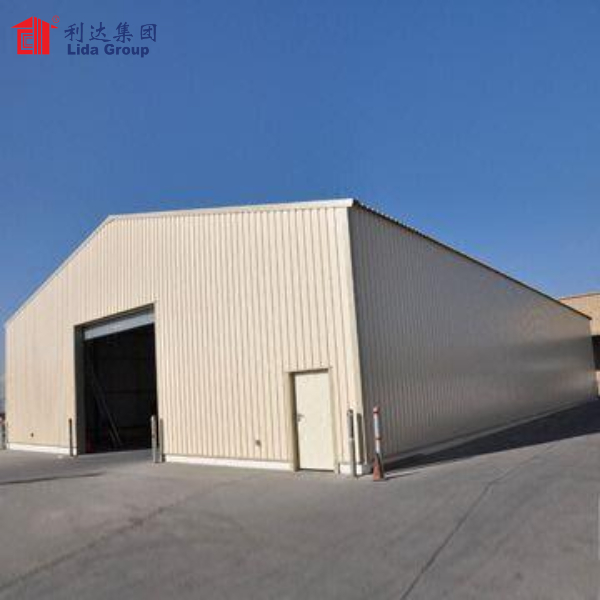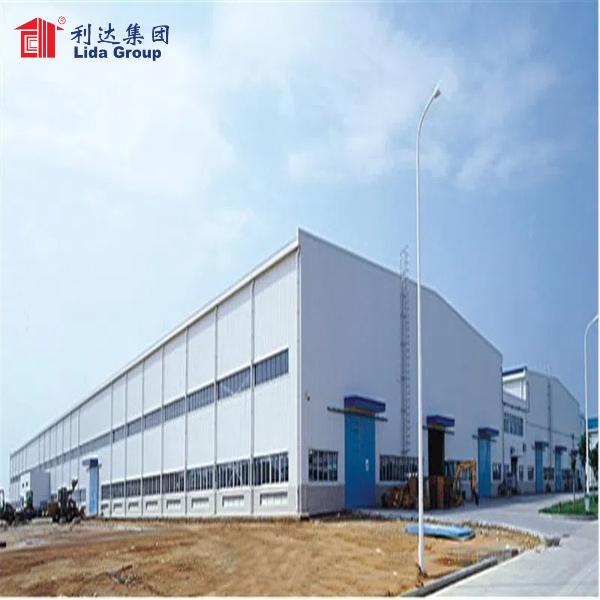Introduction
In recent years, sustainability has become a crucial focus in the construction industry. As urbanization accelerates and environmental concerns grow, the demand for eco-friendly building solutions has surged. One of the frontrunners in this movement is Lida Group, known for its innovative steel structures. This article explores sustainable building practices with Lida Group’s steel structures, highlighting their benefits, applications, and contributions to a greener future.
The Importance of Sustainable Building Practices
1. Environmental Impact
The construction industry significantly contributes to global carbon emissions and resource depletion. Sustainable building practices aim to minimize environmental impacts through:
- Resource Efficiency: Reducing waste and conserving materials.
- Energy Efficiency: Lowering energy consumption during construction and throughout the building’s lifecycle.
- Carbon Footprint Reduction: Using materials and practices that contribute to lower greenhouse gas emissions.
2. Economic Advantages
Sustainable practices can also offer economic benefits, including:
- Cost Savings: Efficient designs and materials can lead to lower operational costs.
- Increased Property Value: Buildings designed with sustainability in mind often have higher market values.
- Long-term Viability: Sustainable structures tend to have longer lifespans, reducing the need for frequent renovations or replacements.
3. Social Responsibility
Sustainable building practices contribute to social well-being by:
- Creating Healthier Environments: Improved indoor air quality and natural lighting enhance occupant health.
- Promoting Community Engagement: Sustainable projects often involve local communities in their planning and execution.
Lida Group: Pioneers in Sustainable Steel Structures
1. Company Overview
Lida Group has established itself as a leader in sustainable building solutions through its innovative use of steel structures. Their commitment to quality, efficiency, and environmental responsibility sets them apart in the industry.
2. Steel as a Sustainable Material
Steel is a highly sustainable building material for several reasons:
- Recyclability: Steel is 100% recyclable without loss of quality. This means that steel structures can be repurposed at the end of their lifecycle, reducing waste.
- Durability: Steel structures are known for their strength and longevity, which minimizes the need for repairs and replacements.
- Energy Efficiency: The manufacturing process for steel has become increasingly energy-efficient, contributing to lower overall carbon emissions.
Sustainable Building Practices with Lida Group Steel Structures
1. Design Efficiency
a. Modular Design
Lida Group emphasizes modular design in its steel structures, allowing for:
- Flexible Configurations: Modular designs can be easily adapted to different needs, reducing the need for new materials.
- Reduced Waste: By using pre-fabricated components, waste is minimized during construction.
b. Optimization of Resources
Lida Group employs advanced design software to optimize resource use:
- Material Optimization: The company utilizes algorithms to determine the most efficient use of materials, ensuring minimal waste.
- Site-Specific Solutions: Designs are tailored to the specific site conditions, further enhancing resource efficiency.
2. Energy Efficiency
a. Insulation and Thermal Performance
Lida Group’s steel structures are designed for optimal insulation, which helps to:
- Reduce Energy Consumption: Proper insulation minimizes heating and cooling needs, leading to lower energy bills.
- Enhance Comfort: Improved thermal performance creates a more comfortable indoor environment for occupants.
b. Integration of Renewable Energy
Lida Group encourages the integration of renewable energy solutions in their buildings:
- Solar Panels: Installing solar panels on steel structures can significantly reduce reliance on non-renewable energy sources.
- Energy Management Systems: Smart technologies can optimize energy use, further enhancing sustainability.
3. Water Efficiency
a. Rainwater Harvesting Systems
Incorporating rainwater harvesting systems can enhance water efficiency:
- Water Conservation: Capturing rainwater reduces the demand on municipal water systems.
- Irrigation and Non-Potable Uses: Collected rainwater can be used for landscaping or other non-potable applications, conserving fresh water.
b. Efficient Plumbing Systems
Lida Group designs plumbing systems that minimize water waste:
- Low-Flow Fixtures: Installing low-flow faucets and toilets can significantly reduce water consumption.
- Greywater Recycling: Systems for recycling greywater can further enhance efficiency.
4. Sustainable Construction Practices
a. Eco-Friendly Materials
Lida Group prioritizes the use of eco-friendly materials in its steel structures:
- Sustainable Sourcing: Materials are sourced from suppliers committed to sustainable practices.
- Low-Impact Materials: Options for low-VOC paints, finishes, and other materials reduce the environmental impact of the construction process.
b. Waste Management Strategies
Effective waste management is crucial in sustainable building practices:
- Construction Waste Reduction: Lida Group implements strategies to minimize waste generated during construction.
- Recycling Programs: Materials that cannot be reused are recycled whenever possible, diverting waste from landfills.
5. Lifecycle Assessment
a. Comprehensive Analysis
Lida Group conducts lifecycle assessments (LCAs) for its projects, which involve:
- Evaluating Environmental Impact: Analyzing the environmental impact of a building from material extraction through to demolition.
- Identifying Improvement Areas: LCAs help identify opportunities for reducing environmental impacts throughout the building’s lifecycle.
b. Continuous Improvement
The insights gained from LCAs inform future projects, enabling continuous improvement in sustainable practices:
- Feedback Loops: Lessons learned from past projects guide design and construction practices for improved sustainability.
- Innovation: Ongoing research and development lead to new materials and techniques that enhance sustainability.
Applications of Lida Group Steel Structures
1. Residential Buildings
Lida Group’s steel structures are increasingly used in residential construction:
- Affordable Housing: Modular steel homes can be built quickly and cost-effectively, addressing housing shortages in many regions.
- Custom Designs: Homeowners can choose from a variety of designs that suit their preferences while maintaining sustainability.
2. Commercial and Industrial Buildings
The versatility of steel structures makes them ideal for commercial and industrial applications:
- Office Buildings: Sustainable steel office buildings offer modern workspaces with reduced environmental impacts.
- Warehouses and Factories: Steel structures provide durable and efficient spaces for industrial operations.
3. Educational Institutions
Lida Group’s steel structures are also used in educational settings:
- Classrooms: Modular classrooms can be quickly deployed to accommodate growing student populations.
- Community Centers: Steel structures serve as community hubs for educational programs and activities.
4. Healthcare Facilities
The healthcare sector benefits from the flexibility and durability of steel structures:
- Temporary Hospitals: In times of crisis, such as pandemics, steel structures can be rapidly deployed as temporary healthcare facilities.
- Long-Term Care Facilities: Sustainable design principles enhance the quality of care environments.
Case Studies of Successful Sustainable Projects
Case Study 1: Modular Housing Development
In a recent project, Lida Group developed a modular housing community that focused on sustainability:
- Outcome: The project provided affordable housing to over 100 families while minimizing environmental impact through efficient design and construction practices.
- Community Engagement: Local residents were involved in the design process, fostering a sense of ownership and community.
Case Study 2: Eco-Friendly Office Complex
A corporate client partnered with Lida Group to build an eco-friendly office complex:
- Results: The project achieved LEED certification due to its energy-efficient design, sustainable materials, and innovative waste management strategies.
- Employee Satisfaction: The new office environment has led to increased employee satisfaction and productivity.
Case Study 3: Emergency Response Facility
In response to a natural disaster, Lida Group constructed an emergency response facility using steel structures:
- Rapid Deployment: The facility was built within weeks, providing essential services to affected communities.
- Long-Term Use: Designed for adaptability, the facility can serve as a community center post-crisis.
Challenges in Sustainable Steel Construction
1. Regulatory Hurdles
Navigating building codes and regulations can be challenging:
- Compliance Issues: Ensuring compliance with local building codes can complicate the design and construction process.
- Permitting Delays: Approval processes can delay project timelines, impacting overall efficiency.
2. Initial Costs
While sustainable practices often lead to long-term savings, initial costs can be higher:
- Investment in Technology: Implementing advanced technologies and sustainable materials may require significant upfront investment.
- Market Perception: Some stakeholders may be hesitant to invest in sustainable practices due to perceived risks or costs.
3. Education and Awareness
Raising awareness about the benefits of sustainable steel structures is essential:
- Stakeholder Buy-In: Educating clients and stakeholders on the advantages of sustainable practices can facilitate project approval and support.
- Training Programs: Ongoing training for construction professionals is necessary to ensure the effective implementation of sustainable practices.
The Future of Sustainable Building with Lida Group
1. Innovations in Steel Construction
The future of sustainable building practices with Lida Group is bright, driven by ongoing innovations:
- Advanced Materials: Research into new materials that enhance sustainability will continue to evolve.
- Smart Building Technologies: The integration of smart technologies will optimize energy use and improve occupant comfort.
2. Global Expansion
As the demand for sustainable building solutions grows, Lida Group is poised to expand its reach globally:
- Emerging Markets: Increased urbanization and industrialization in developing countries present opportunities for sustainable steel solutions.
- International Collaborations: Partnerships with local firms can enhance project effectiveness and sustainability.
3. Policy Support and Incentives
Government policies and incentives will play a crucial role in promoting sustainable building practices:
- Tax Incentives: Financial incentives for sustainable construction can encourage more projects.
- Regulatory Support: Streamlined regulations for sustainable practices can facilitate faster project delivery.
Conclusion
Sustainable building practices are essential for addressing the environmental challenges facing our planet. Lida Group’s commitment to sustainability through its steel structures demonstrates how innovative design, efficient materials, and eco-friendly practices can create a positive impact.
As the construction industry continues to evolve, Lida Group is at the forefront of this transformation, offering solutions that not only meet the needs of today but also pave the way for a more sustainable future. By prioritizing sustainability in design and construction, Lida Group is helping to build a world that is not only efficient and functional but also environmentally responsible.
Contact Us
Post time: Sep-09-2024


